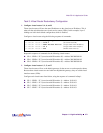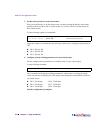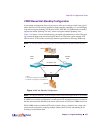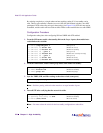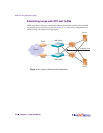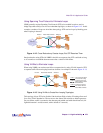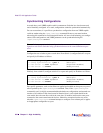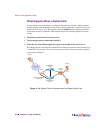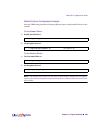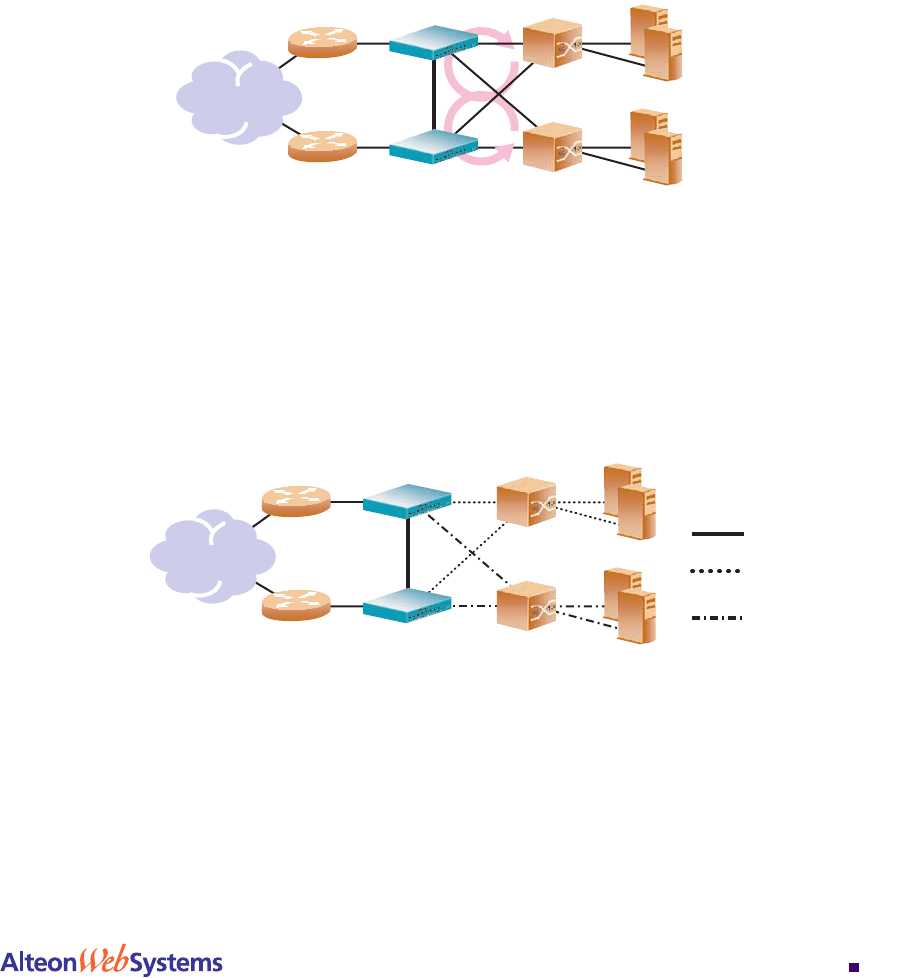
Web OS 10.0 Application Guide
Chapter 11: High Availability
279
212777-A, February 2002
Using Spanning Tree Protocol to Eliminate Loops
VRRP generally requires Spanning Tree Protocol (STP) to be enabled in order to resolve
bridge loops that usually occur in cross-redundant topologies, as shown in Figure 11-12. In this
example, a number of loops are wired into the topology. STP resolves loops by blocking ports
where looping is detected.
Figure 11-12 Cross-Redundancy Creates Loops, But STP Resolves Them
One drawback to using STP with VRRP is the failover response time. STP could take as long
as 45 seconds to re-establish alternate routes after a switch or link failure.
Using VLANs to Eliminate Loops
When using VRRP, you can decrease failover response time by using VLANs instead of STP
to separate traffic into non-looping broadcast domains. An example is shown in Figure 11-13:
Figure 11-13 Using VLANs to Create Non-Looping Topologies
This topology allows STP to be disabled. On the Alteon Web switches, IP routing allows traf-
fic to cross VLAN boundaries. The servers use the Alteon Web switches as default gateways.
For port failure, traffic is rerouted to the alternate path within one health check interval (con-
figurable between 1 and 60 seconds, with a default of 2 seconds).
Routers Alteon Web Switches Switches Servers
Internet
is for switch-to-switch
and external routing
groups the first sub-
switch with the Alteon
Web Switches
groups the second
sub- switch with the
Alteon Web switches
VLAN 1
VLAN 2
VLAN 3
Routers Alteon Web Switches Switches Servers
Internet



